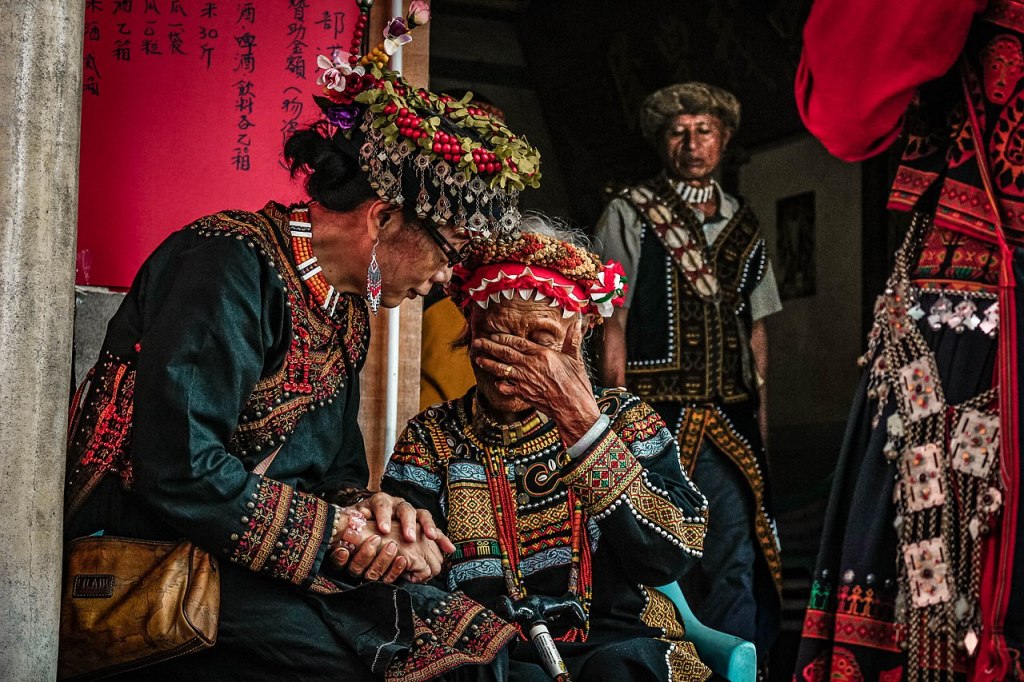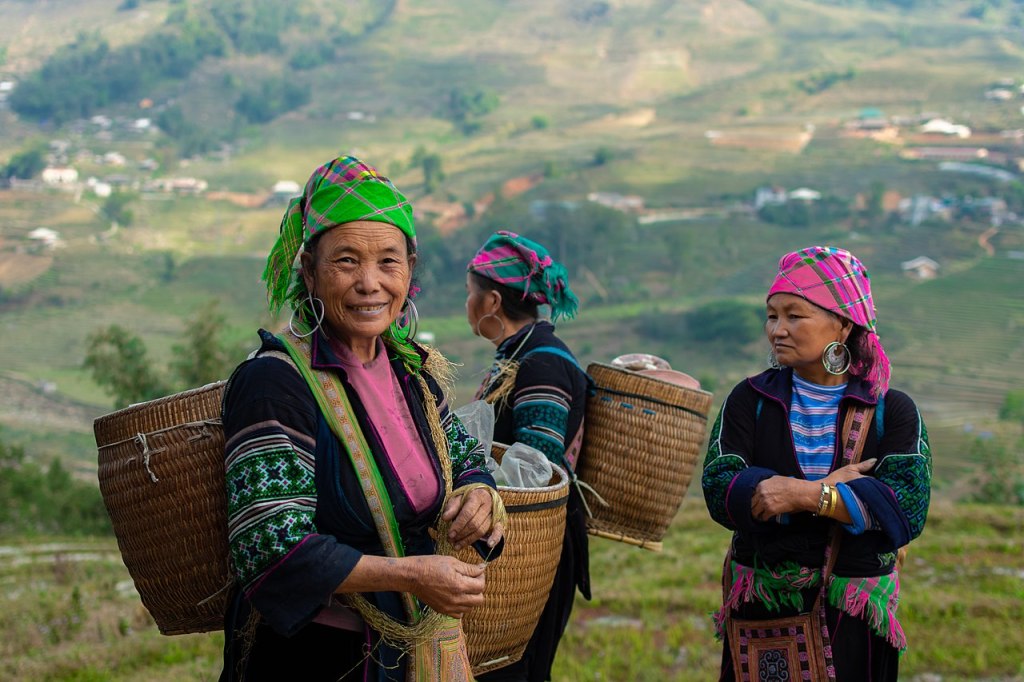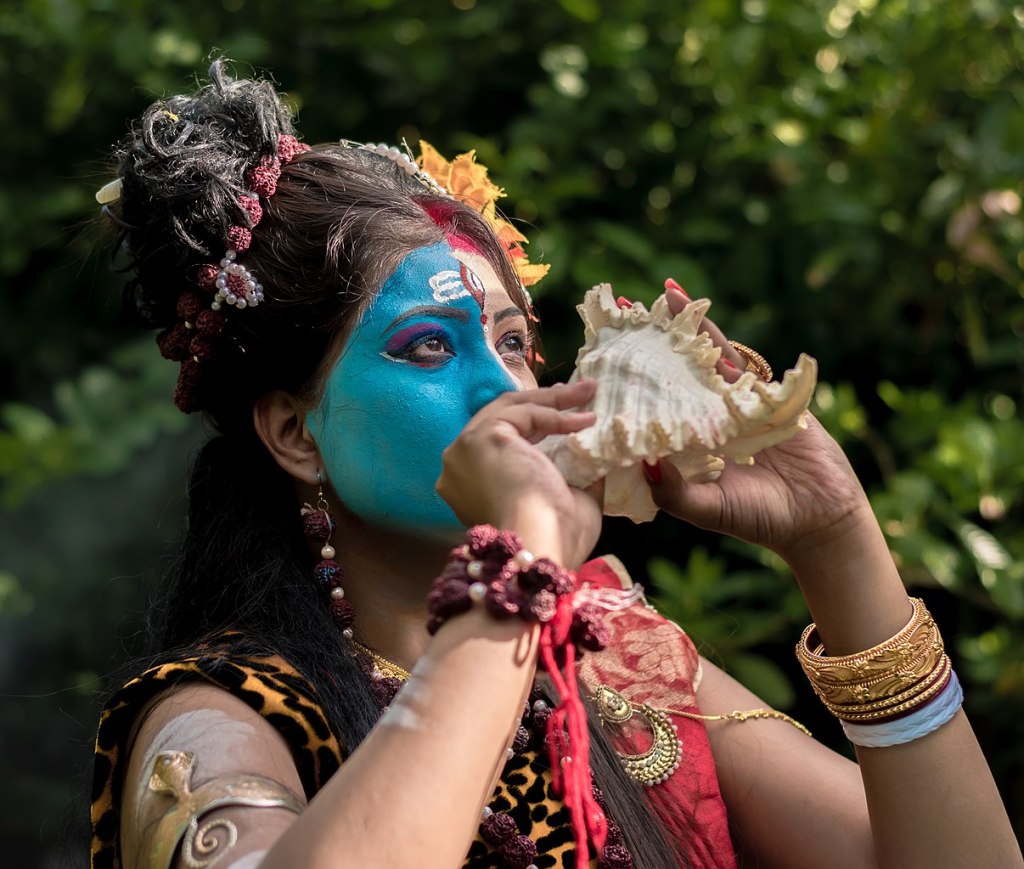Out of more than 19,052 submissions, eighteen winning images were announced in the Wiki Loves Folklore international photography contest. Emotionful reunion of family. A group of horse riders charging along a straight path from the Moroccan Tbourida Fantasia festival in the city of Jarada. Striking joyful expression and colorful dance performance from the Sinulog Festival. These are just the top three entrancing sights captured by the winners of the international Wiki Loves Folklore photography competition, whose results were announced today.
Wiki Loves Folklore focuses on folk culture — the unique folklore and traditions that make up a large proportion of the world’s intangible heritage — the folk dances, folk music, folk activities, folk games, folk cuisine, folk wear, folktales, folk arts, folk religion, mythology, etc.
The contest calls out for photographers around the world to Wikimedia Commons, a media repository hosting images that are freely licensed for anyone to be used for any purpose, ensuring the world’s cultural heritage is documented and stored for future generations.
Organized in February, this year’s rendition of Wiki Loves Folklore inspired thousands of unique submissions from rich cultures of over one twenty-five countries by fourteen hundred ninety-six photographers.
The 2020 entries were judged by an international jury/committee of experts which selected the images that you see above and below. The winners come from nine different countries, including multiples from Taiwan, Philippines, India, Morocco, Vietnam, Canada, Ukraine, Argentina, and Indonesia.
All told, the competition elicited 19,052 image submissions, 144 videos, and 13 audio files from over 125 countries. Enjoy the entrancing of 20 winners below.

First prize: Till we meet again — the emotionful rencontrer of a family in Taiwan. On the upper reaches of Taimali Creek, Dawu Mountain shifted to Zhengxing Village in Jinfeng Township which led half of the populace relocating to the Xinyuan Village in Taitung City. The relocated folks meet their family members once a year at the festival. What’s special about this image is the way it has captured the beautiful emotions of long adrift family members who get to reunite with each other only once a year, their tears exhibit the joy of meeting their loved ones and pain for the time they have lost with each other.
The jury commended the image eliciting the contrast between the tradition and the progressive present. Another jury reflects the capture of details of the intricate jewelry and clothing special headdresses with the capture of a moving moment and deep emotions. This was our jury member’s favorite photo from the competition because of its “high documentary value, and artful expression of a very human and touching scene.” This photograph highlights the deep sadness of an exiled woman, who experiences a mixture of joy, frustration, and sadness every year during the reunion with her family. According to the jury member, “this photo peers into the window to intense emotions sublimated by the beauty of the costumes.” Photo by 黃孝擎, CC BY-SA 4.0.

Second prize: Fantasia, a traditional exhibition of horsemanship performed during cultural festival moussem (meaning “saint’s day festival” in Arabic) and for Maghrebi wedding celebrations in Morocco. This cultural performance symbolizes the relationship between the rider and the horse. Horse riders charge at the same speed keeping a line and the ride marks the end when they shoot in the sky using muzzle-loading rifles. The challenge of this performance is keeping the sync between the movement of the horses and simultaneously charging fire in a way that is heard as a singular collective shot.
Houssain tork is an amateur photographer who traveled two hundred thirty kilometers with his friends to attend the Moroccan Tbourida Fantasia festival in the city of Jarada where he enjoyed the show and shot this picture to document this traditional celebration in Morocco that people enjoy once a year. The jury commended this picture for its “lively representation with horses and weapons that are hard to handle simultaneously. The photographer has perfectly frozen the adversities that the actors are exposed to.” Another jury commented on “the entrancing way this image immerses the viewer immediately in the movement and action of the scene where the thermosphere is well rendered.”Photo by Houssain tork, CC BY-SA 4.0.

Third prize: This image was taken by Herbert Kikoywhile attending the Sinulog-Santo Niño Festival in the Philippines. This photo reflects the fervor of the Filipino Catholics, commemorating the Holy Child Jesus, locally known as Santo Niño, is among the most venerated and recognizable religious images in the Philippines. One jury notes, “the vibrant colors of the central figure stand out from the dark creates a lively atmosphere and a balanced layout.” Another jury commends the capture of the joyful movements of the dancers in a single moment made to stand out with their beautiful costumes and their emotions, and also wins by the charming contrast of colors between the principal dancer and the rest. It was commended by one jury member for its commemoration of the birth of “Jesus” is particularly symbolized there because only the child’s face is lit up, which they saw as “ reminiscent of the “Clair-obscures” of the painter Rembrandt.”Photo by Herbert Kikoy, CC BY-SA 4.0.
Next are the top fifteen consolation winners!

This image demonstrates Bharatanatyam which is the oldest Indian folk dance tradition that is indigenous to Tamil Nadu and it expresses South Indian culture themes and spiritual ideas, particularly of Shaivism, Vaishnavism, and Shaktism.
The jury commends this photograph as a beautiful documentary photo, composed according to the golden section, which shows the expressive gesture of the dancer and emphasizes her ornate costume by the contrast between light and darkness. “What I like about this image is its capture of the artist’s movements and expression,” one jury said, “the dark background and the reflective floor reflect the situation on stage well.” Another jury noted, “the photo of this Bharatanatyam dance offers a striking pose of Shiva in Hindu temples.” Photo by Vijay Sundararaman Iyer, CC BY-SA 4.0.

Shagil Kannur got the image attending a folk festival ‘Theyyam’ in Kerala, India. Theyyam consists of several thousand-year-old traditions, rituals, and customs which is considered as a channel to a God from which people seek blessings from.
The jury commends the photograph as a compelling shot that separates the person from the crowded background by low depth of field, places the person according to the golden section, and is rich in colors, lights, and shadows. Photo by Shagil Kannur, CC BY-SA 4.0.

A dance drama performing a Hindu ritual in India. This image was applauded by the jury as a calm and beautiful expression despite the fire. One jury noted, the image is accentuated by the face of the artist which is ideally positioned between the flames yet exhibits a miraculous calm.”
Another jury commended “the clear focus on the expression that elicits the incarnation of the goddess ‘Devi’, reinforced by the freshness of the young dancer.”Photo by Tapas Kumar Halder, CC BY-SA 4.0.

Elisolidum got this image attending the Ati-Atihan Festival in the Philippines. One jury commended the image, “Discovering a friendly smiling mouth and bright eyes between the patterns and colors pleasantly surprise the viewer. This suddenly gives a chaotic layout of an order.”
Another jury praised the photograph as an excellent capture that exudes gaiety with this variegated costume, its sequins, its feathers, and its pompoms. One jury noted this as a colorful photo that successfully catches the richness of the festival by showing a small, very well-composed detail with a single woman and parts of her ornate costume. Photo by Elisolidum, CC BY-SA 4.0.

This image is a capture from celebrations of the Kadayawan Festival in the Philippines. The jury praised the photograph as “the dream of colors and movements.” Another jury commends the image for “the flux of ordered colors and people bursting with zest for life in the image.” Another jury loves the image for the capture of “vivid ebullience of joy in a festive atmosphere.” The jury notes that by focussing on the man in the center, showing another person with the same costume, but slightly different posture behind him, and getting the people in the background with their costumes in contrasting colors out of focus the photographer has added a feeling of depth and richness to the image. Photo by Fpj455, CC BY-SA 4.0.

A vibrant image shot by Sundaram Perumal in Madurai Tamilnadu. “This game’s name is jallikattu every January month, this game is celebrated as a festival.”, says Sundaram, “After capturing this shot I saw the playback one man had fallen out on the ground. I was freezing at that time.” The jury commends the image for its framework, colors, and balance.
A jury notes, “It doesn’t look entirely harmless and the man lying on the ground immediately attracts attention as well as the animal in the center of the action. The people around form a suitable framework.”
Another jury praises the photo “capturing a dramatic moment in the game when one man has fallen, another one seems to struggle for getting back the balance, and three are wrestling with the bull. The photo is full of colors and power.” Photo by Sundaram Perumal, CC BY-SA 4.0.

A shot capturing the performers of Theyyam performing a ritual in Kerala, India. The photographer shares, “Theyyam is a popular ritual form of worship in Kerala, India and is considered as the dance of Gods. I photographed the image in my local place of worship (locally known as Kaavu) in Kannur, Kerala, taken during dawn at four in the morning. He explains that his capture is meant to depict the emotions and expression of an entire culture and the devotion by different artists behind it to make it possible. A jury commends and compares this capture as similarity to the second prize picture.”The wonderful mask and the colorful costume are captured very well despite difficult lighting conditions and presumably fast movement.” Another jury commends the usage of low depth of field to concentrate on the expression of the face. “The profile and the ornate costume are emphasized by the high contrast of color and brightness before the almost black background.”
Another jury applauds the capture as “a great portrait of the Theyyam performer exhilarating the serenity and gravity of Kerala.” Photo by Adzac5848, CC BY-SA 4.0.

Taken by Herbert Kikoy during the Kahimunan Festival in Butuan City, Caraga, Philippines, this photograph portrays a Manobo girl performing a folk dance. The jury praised this capture for “good light and excellent bokeh characterizing a perfectly frozen movement.” Another jury commends the capture for its “refreshing composition which seems to have frozen an important gesture of the dancer. By proper usage of low depth of field and exact focus on the face, the photo emphasizes both her expression and the rich costume.” Another jury applauded the value of reflection of the innocence of the youth of the Philippines.Photo by Herbert Kikoy, CC BY-SA 4.0.

Photographed by Tapas Kumar Halder in India, this image portrays a child artist performing as Lord Krishna, a major deity in Hinduism. Krishna is usually depicted with a flute in his hand wearing a peacock feather accessory in his hair. The jury commends it as “a wonderful composition in delicate tones of blue and green, enriched with spots of other vivid colors. The excellent lighting makes the peacock feather shine like gold and jewels and gives a great contrast to the dark hair and blue color on the face.” Another jury applauded the photograph for its good color combination and a successful floor plan which is a key to success. Photo by Tapas Kumar Halder, CC BY-SA 4.0.

Captured by Martyna Pedziach, this photograph is a portrait of Vietnamese women in traditional folk wear. The jury praised the contrast of the portrait against the landscape in the background.
Another jury commended this capture as a “classic portrait”. Another jury applauded it as “a nice documentary shot that depicts the women in their traditional costumes before the landscape in which they live and work. Thanks to this combination, we can learn much about the everyday lives of these people by carefully studying the image, and the photo even seems to tell us something about their emotions by showing both smiling women and two somewhat more reserved ones.” Photo by Martyna.pedziach, CC BY-SA 4.0.

Portraying the festivities of Christmas with a flurry of lights and the colors — this photo was taken by Ting Ting Chen from the annual folk festival, Port de Grave Boat Lighting which is celebrated by Newfoundlanders for the last 10 years. The boats in Port de Grave put their lights on each year in early December and the lights last till early January. Thousands of people across Canada come to visit this boat lighting festival each year, and some even come outside of Canada. “I took this photo on a quiet and clear night when the stars were so bright,” says Ting ting Chen. The jury praised this capture as “the true riot of color under a starry sky portrayed skilfully by the photographer.” “The photo enchants me by the combination of the vivid colors and shining lights of the ships with the dark infinity of the starry sky. While many people would mistakenly associate Newfoundland with cold and isolation, this image shows us the creativity and the zest for living of the Newfoundlanders”, applauds another jury member. Photo by Ting ting Chen, CC BY-SA 4.0.

The photograph was captured by Mikhail Kapychka portraying a traditional act of water transfer during a Ukrainian traditional holiday from the city of Kiev, Ukraine. One jury member called it “a classic portrait” while another commended the photographers framing. Another jury member reflected wonder about the carefree kind smile of the lady in the portrait despite the heavyweight lifted on her shoulders. The photo combines the representation of traditional everyday cultural techniques with the depiction of the rural context to which they belong and with a sensitive documentary-like portrait. Photo by Mikhail Kapychka, CC BY-SA 4.0.

The image reflects the grace and strength of tango in Buenos Aires, Argentina. The photographer, Manticora87, shares he had to wait at several traffic lights to take this photo. Tango is a partner dance, and social dance that originated in the 1880s along the Río de la Plata, the natural border between Argentina and Uruguay. One jury member applauds “the capture of the spirit of tango in dramatic gesture mid-on famous Avenida Corrientes. This is a strong poetic image. Even the carefully composed colors (mostly red and black) contribute firmly to the expression.” Another jury member praised the photographer for staging the three colors and a precisely fitted obelisk. Photo by Manticora87, CC BY-SA 4.0.

This photograph portrays Ardhanarishvara, which is a composite male-female figure of the Hindu god Shiva together with his consort Parvati. Ardhanarishvara showcases half-male and half-female, equally split down the middle. One jury member commends the photograph for portraying the realism of the image. “One seems to be able to almost hear the sound leaving the snail shell.” says a jury member. Photo by Tapas Kumar Halder, CC BY-SA 4.0.

Photographed by RaiyaniM who shares their affinity with intangible heritage, “as a travel photographer, I’m very appreciative to shoot more culture every place.” Gendang Beleq is traditional music that is usually performed for religious or cultural events in Lombok, Indonesia. The jury commends the image, “The unusual composition in which the man in the foreground and his big drum almost seem to break the frame of the image guarantees for a strong physical presence of the depicted person. The people in the background add depth to the image. Watching this photo I feel like staying directly on that street myself.” Photo by RaiyaniM, CC BY-SA 4.0.
Best Video Prize: Maslenitsa celebration in Khmelnytskyi, Ukraine. Alina Vozna who shot this video in Ukraine, shares, “I shot a video during Maslenitsa celebrated on the last day of winter.” The jury member applauds the clarity and calmness in the videography and the difficult lighting conditions. Praising the drama and the elegance of the performance, another jury member commends the moving pictures over static photographs for documenting such events. Video by Alina Vozna, CC BY-SA 4.0.
Best audio prize: The winning song “प्रभु यिशु जी खुलल दरबार बायं” features a newer set of lyrics by Ambika Prasad of Uttar Pradesh, with a folk tune common in the region, especially sung nearby the Holi festival. The tune itself is very old, traditional folk, with at least 10 different sets of lyrics that devotees of different gods add to the folk tune. This newer rendition is keeping with this tradition. The uploader shares about the winning audio, “During my PhD Field Research period for a degree in Social Sciences (Ethnomusicology), I was studying and recording folk songs of the Bhojpuri region of northern India. I was introduced to Ambika Prasad of Basti, Uttar Pradesh, who has composed lyrics to over 80 bhajans, this is a traditional well-loved folk tune recorded in Allahabad, Uttar Pradesh.” The jury member praises this song as “an excellent piece of music that combines old and new elements. Singer and orchestra are well attuned to each other and present a coherent recording that is a pleasure to listen to.” Another jury member commended it as “a wonderful piece of music that seems to carry us off into another world.” Audio by Balone21, CC BY-SA 4.0.
Footnote
- All the media above is available under Creative Commons CC BY-SA 4.0 license free for use with appropriate attribution to the author with the same copyright license.
Originally published on Medium by the Open Heritage Foundation

Can you help us translate this article?
In order for this article to reach as many people as possible we would like your help. Can you translate this article to get the message out?
Start translation